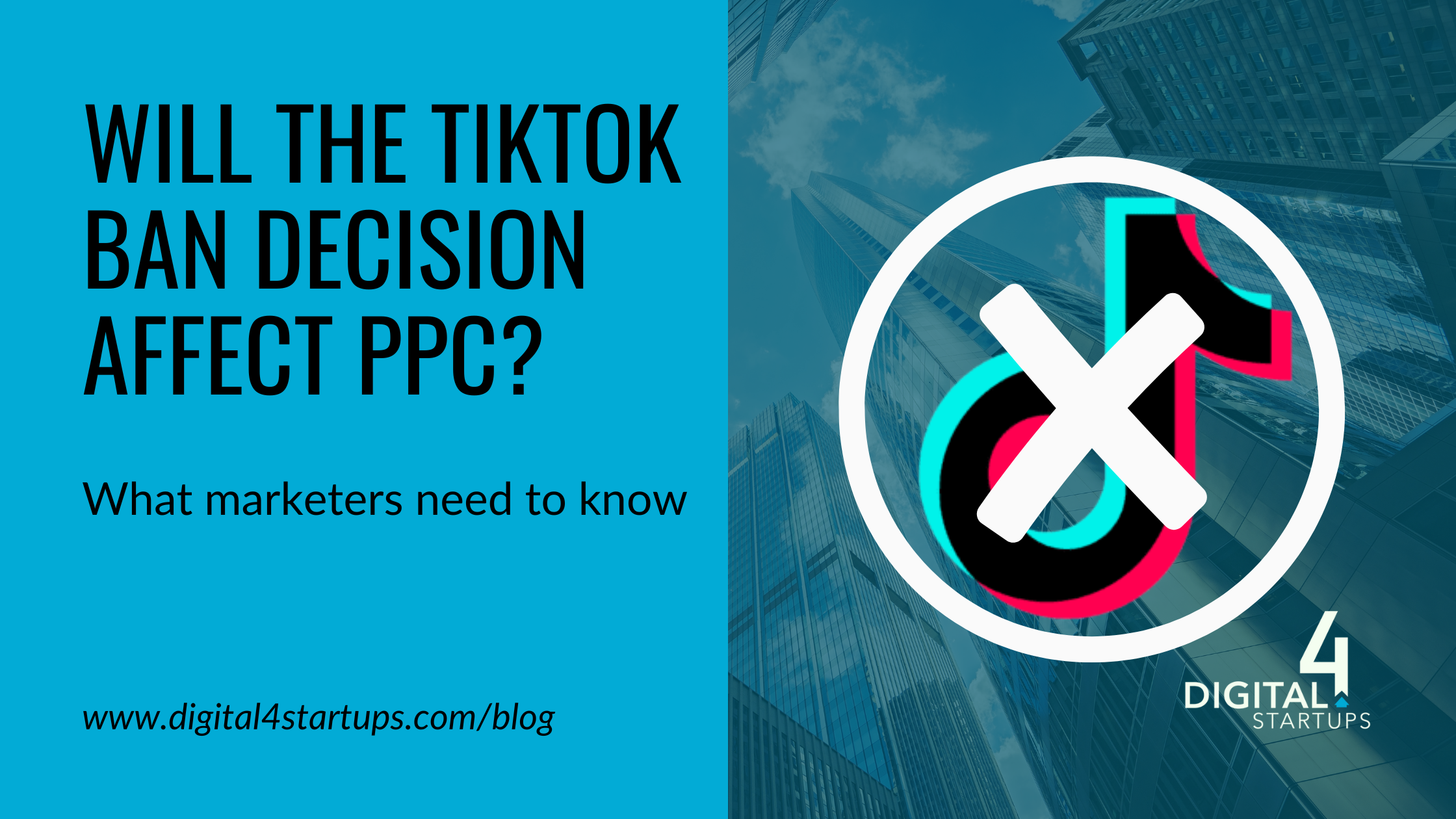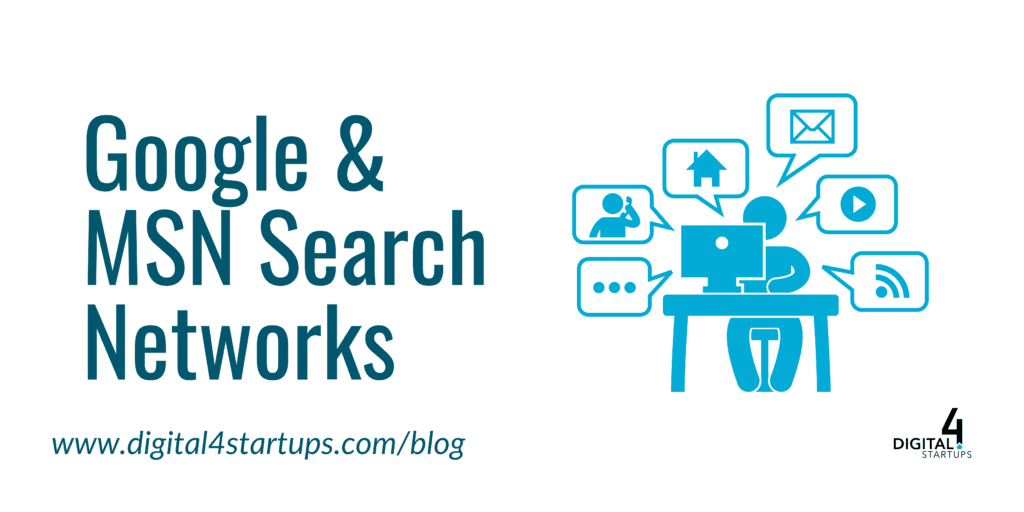
Will The TikTok Ban Decision Affect PPC? What Marketers Need To Know
After months of speculation and uncertainty, the TikTok ban that worried creators, advertisers, and users, is set to officially go into effect.
On Friday, January 17, The Supreme Court rejected TikTok’s First Amendment challenge to law 24-656 Tiktok Inc. v. Garland, effectively banning it in the United States starting Sunday, January 19.
The short-form video app has built a massive following since its creation in 2016, with more than 170 million American users; becoming a popular app for running paid ads and building relationships with influencers.
Now that the ban is planned to go into effect on Sunday, advertisers are talking about the significant repercussions for the PPC world.
If you’re wondering what the future will look like for PPC now that TikTok is banned, Digital4Startups can help fill you in on what you need to know.
What is the TikTok ban?
Talks of the TikTok ban started as early as 2019 when concerns about TikTok’s data privacy arose and national security implications emerged. This was primarily because the app is owned by Chinese company Bytedance, and at the time, U.S. lawmakers expressed worries that the Chinese government could gain access to American users’ data.
The talks of a potential ban started at the end of Donald Trump’s first presidency in 2020. During that time, President Trump issued an executive order, giving ByteDance 45 days to sell TikTok’s U.S. operations to an American company or face a ban.
Congress passed that law in April – which fast forward to now – and that deadline will have been reached on Sunday. Talks around TikTok’s potential ban have also been in the works in several countries, including India, which already banned TikTok in 2020 over security concerns.
If the ban deadline goes through on Sunday, federal law would prohibit digital stores from offering the app and TikTok wouldn’t be able to send updates, security patches, or bug fixes. This would then lead to further security issues and degrade the quality of the app, ultimately becoming unusable over time.
The only thing that would delay this ban from going into effect is if President-elect Donald Trump plans to intervene–which he has stated he wants to “save” the app–when he takes office on Monday, January 20.
How will the TikTok ban affect digital marketing?
If you’re reading this, you’re probably wondering: How will this affect my ads? Well, in short, you need to start thinking of alternative options. If you use TikTok as a marketing tool and don’t already have a contingency plan, advertisers suggest you create one.
Many influencers and advertisers have already switched over to Meta-owned Instagram Reels and YouTube Shorts as they incorporate similar features and functionality from TikTok to meet user and advertiser demands.
Advertisers suggest you still focus on short-form video content production but on other platforms. Ensuring you have business accounts set up for Google, YouTube, Snapchat, Meta, Instagram, and Pinterest, will save you in the long run.
When you update those platforms, make sure your billing is up to date, and your content is the right size and format. Then, you can quickly launch paid ads when needed. If you want to start early, try scaling on Meta and YouTube first and reuse your content used for PPC.
In terms of spend, it’s common to shift and spend about half of your reallocated US TikTok ad dollars on Meta (Facebook, Instagram) and YouTube and put the other half towards retail media.
What alternatives to TikTok do advertisers have?
As suggested before, the top platforms on the same competitive level as TikTok are Instagram Reels and YouTube Shorts. If you’re wondering which one would be best between the two, here are some recent stats for each of the platforms.
In general, both platforms have grown tremendously within the past year. Instagram Reels has an average of 166 million American users, and YouTube Shorts has an average of 153 million American users, which is expected to grow to 175.1 million this year.
If your ads on TikTok are short and sweet and focused on trends and virality, then Instagram Reels are your go-to. However, if your ads are slightly longer and more informative, then YouTube Shorts is your best bet.
Advertisers also suggest developing an organic strategy tailored for conversion that understands the specific needs and behaviors of your industry’s audience during this time.
This could include posting content that highlights unique experiences, customer testimonials, and special offers to attract and convert viewers. Another idea is polls and Q&A sessions to deepen user engagement and encourage leads and conversions.
During this time, you want to be posting informative but engaging content that speaks to your audience and helps create a more authentic experience. Lastly, you could try to post exclusive promotions to followers to foster a loyal customer base and generate buzz.
Conclusion
The official TikTok ban in the United States marks a significant shift in the digital marketing landscape. Advertisers who have relied on TikTok to engage with its massive user base will need to pivot quickly to other platforms like Instagram Reels and YouTube Shorts. These platforms both offer similar features and continue to grow in popularity.
By adjusting ad strategies and diversifying across multiple platforms, businesses can continue to reach their audience effectively. Additionally, focusing on creating engaging, short-form content tailored to each platform’s strengths will be essential to maintaining a competitive edge.
If you have any questions about Google Ads, Meta ads, or YouTube Shorts, and want to schedule a consultation, please email info@digital4startups.com.


